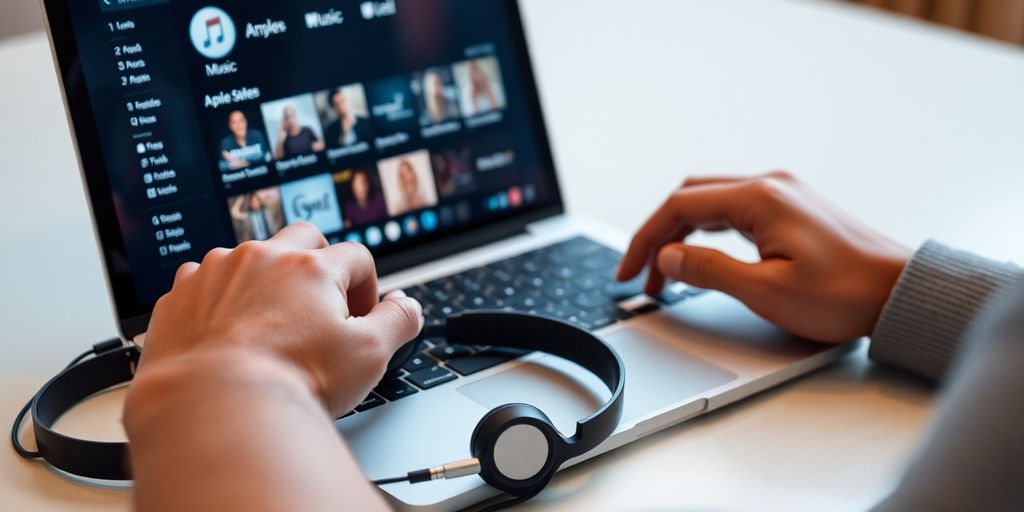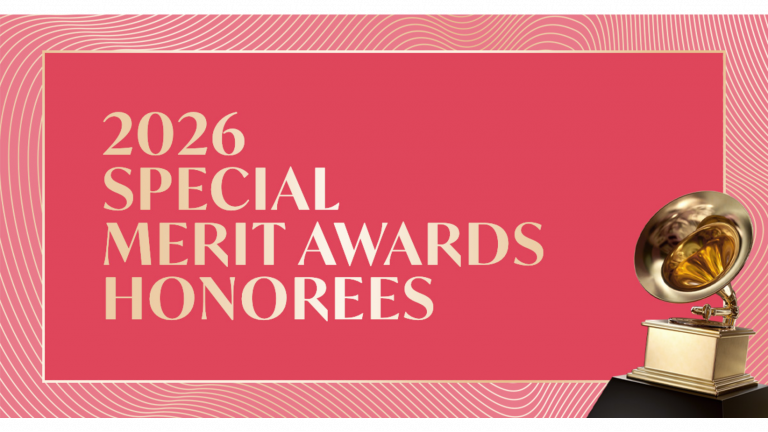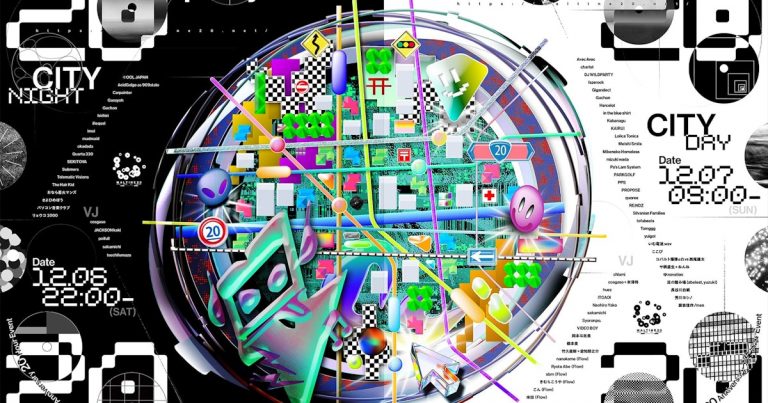
So, you’ve got a ton of music on Apple Music, right? But here’s the thing: those tracks are often locked down, meaning you can’t just play them anywhere you want. It’s super annoying when you want to listen on a device that isn’t Apple-friendly, like an old MP3 player or even some Android gadgets. This is where an apple music downloader comes in handy. It helps you get your music into a more common format, like MP3, so you can enjoy your tunes without all the fuss. This guide will walk you through everything you need to know about picking the best apple music downloader for your needs.
Key Takeaways
- An apple music downloader lets you convert Apple Music tracks to common formats like MP3, making them playable on many devices.
- There are different kinds of apple music downloader tools out there, from simple online converters to full-featured software.
- When picking an apple music downloader, think about how fast it converts, what formats it supports, and how easy it is to use.
- Using an apple music downloader for your own listening is generally okay, but sharing converted music with others is usually not allowed.
- Some apple music downloader programs can keep the original sound quality and song info, which is a nice bonus for your music collection.
Understanding Apple Music Downloaders
Why an Apple Music Downloader is Essential
Trying to play Apple Music tracks outside the official app can be frustrating. Without a downloader, you can’t enjoy your tracks beyond the Apple Music app. Here’s why you might need one:
- Listen offline on any player or device
- Keep a permanent copy in case you cancel your subscription
- Share files with friends or burn them to a CD
Even if you never thought about it before, having a saved MP3 version of your favorite songs can save the day when you lose signal or just want to use a simple player.
Types of Apple Music Converters Available
You’ve got a few options when it comes to turning your Apple Music library into MP3s or other formats:
| Converter Type | Installation Needed | Speed | Notes |
|---|---|---|---|
| Online Tools | No | Medium | Quick setup, size limits |
| Desktop Software | Yes | Fast | High quality, batch jobs |
| Browser Plugins | Sometimes | Medium | Handy, but less stable |
One popular option is the free online tool AAPL Music Downloader, which skips any install and grabs MP3s right in your browser.
Key Features of a Reliable Apple Music Downloader
When you pick a downloader, look for these must-haves:
- DRM removal so you actually own the file
- Support for multiple output formats (MP3, AAC, FLAC)
- Batch conversion to save time on big libraries
- Metadata preservation (artist, album art, track info)
- Fast conversion speed without crashes
Choose a tool that balances ease of use with solid performance—no one wants to fight with confusing menus or slow exports.
Choosing the Right Apple Music Downloader
Alright, so you’re ready to pick an Apple Music downloader. It can feel like a jungle out there with so many options, but don’t sweat it. Let’s break down what to look for so you can find the perfect fit.
Evaluating Output Formats and Quality
First things first, think about where you want to listen to your music. The best downloaders support a range of formats like MP3, AAC, FLAC, and WAV. MP3 is super common and works on pretty much everything, but if you’re an audiophile, you might want FLAC for that lossless quality. Also, pay attention to the bitrate settings. Higher bitrate usually means better sound, but it also means bigger file sizes. Finding the right balance is key.
Assessing Conversion Speed and Efficiency
Nobody wants to wait forever for their music to download. Look for a downloader that boasts fast conversion speeds. Some software uses fancy tech to speed things up, like batch conversion, where you can convert a whole bunch of songs at once. Also, check if the software is stable. Does it crash a lot? Does it hog your computer’s resources? A good downloader should be quick and efficient without being a pain to use. For example, AudiCable Apple Music Recorder is known for its efficiency.
Considering User Interface and Ease of Use
Let’s be real, nobody wants to wrestle with complicated software. The best Apple Music downloaders have a clean, intuitive interface. You should be able to find what you need without digging through menus or reading a manual. Look for features like drag-and-drop functionality, clear instructions, and easy access to settings. If the software looks like it was designed in the ’90s, maybe keep looking.
A simple interface can save you a lot of headaches. You want to spend your time enjoying your music, not fighting with your software. A well-designed interface makes the whole process smoother and more enjoyable.
Top Apple Music Downloader Software
DumpMedia Apple Music Converter Overview
Okay, so DumpMedia Apple Music Converter is one of those programs that just works. It’s not flashy, but it gets the job done. It’s designed to strip the DRM from Apple Music tracks and convert them into more common formats like MP3, AAC, FLAC, etc. This means you can finally listen to your Apple Music songs on any device you want, even if it’s not an Apple product. The interface is pretty straightforward, so you don’t need to be a tech whiz to figure it out. It also supports batch conversion, which is a huge time-saver if you have a lot of songs you want to convert.
HitPaw Apple Music Converter Features
HitPaw Apple Music Converter is another solid option. What’s cool about HitPaw is that it’s integrated into their larger HitPaw Video Converter suite. So, you’re not just getting an Apple Music converter; you’re getting a whole bunch of other tools too. It’s fast, efficient, and easy to use. Plus, it supports a wide range of output formats. If you’re looking for something that can do more than just convert Apple Music, HitPaw is worth checking out. It’s a great tool for escaping Apple Music’s restrictions.
Other Notable Apple Music Downloader Options
There are a bunch of other Apple Music downloaders out there, each with its own strengths and weaknesses. Here’s a quick rundown of some other options you might want to consider:
- Audacity: This is a free, open-source audio editor that can also be used to record Apple Music and save it as MP3. It’s a bit more technical than the dedicated converters, but it’s free and very powerful. You can customize the audio settings such as bitrate, sample rate, and channels as required.
- Soundloaders: This is an online platform that provides a downloader app for music streaming services such as Apple Music. With Soundloaders’ Apple Music Downloader, you can download and convert Apple Music into MP3 files that can be accessed on various platforms. To download Apple Music to MP3 using Soundloaders, you can:
- Access the desired music on the Apple Music platform
- Copy the link to the music
- Paste the link into the search bar of the Soundloaders app
- Download the music to your computer
- iTunes/Music App: Believe it or not, you can actually convert Apple Music to MP3 directly within iTunes (or the Music app on newer macOS versions). It’s not as straightforward as using a dedicated converter, but it’s a built-in option that you might find useful. To change the encoding settings, go to Music > Preferences in the menu bar. Then, select the Files tab and click on Import Settings. Choose MP3 Encoder from the menu next to Import Using and select the desired output quality from the drop-down menu. Select the desired songs in your library. Then, while holding down the Option key on your keyboard, choose File > Convert > Create MP3 Version. The converted songs will then appear in your library as MP3 files alongside the original song files.
Choosing the right Apple Music downloader really depends on your specific needs and technical skills. If you want something simple and easy to use, DumpMedia or HitPaw are good choices. If you’re comfortable with a more technical approach and want a free option, Audacity is worth a try. And if you just need a quick and dirty solution, iTunes/Music app might be enough.
Step-by-Step Guide to Using an Apple Music Downloader

Installing Your Chosen Apple Music Downloader
Okay, so you’ve picked out your Apple Music Converter. Now what? First things first, you gotta get it installed! Usually, this means heading over to the software’s official website and downloading the installation file. Double-click that file, and follow the on-screen instructions. It’s pretty straightforward, like installing any other program. Make sure you pay attention during the installation process, as some downloaders might try to sneak in extra software you don’t want. Once it’s all set up, launch the application. You might need to grant it permission to access your Apple Music library, so be ready for that.
Selecting Songs for Conversion
Alright, time to pick the tunes you want to convert. Most Apple Music downloaders will display your Apple Music library in a way that’s easy to navigate. You’ll probably see your playlists and albums listed on the left side of the interface. Just click on a playlist to view the songs inside. To select a song, simply check the box next to its name. Some programs have a search function, which is super handy if you’re looking for something specific. And if you’re planning to convert a whole bunch of songs, look for a "select all" option to save yourself some time.
Configuring Output Settings for Optimal Quality
Now for the nitty-gritty: setting up the output. This is where you tell the downloader what kind of file you want (like MP3, AAC, or FLAC) and how good you want it to sound.
Most downloaders let you tweak things like the bitrate and sample rate. Higher bitrates usually mean better sound quality, but they also result in larger file sizes. A good starting point is 256 kbps for MP3s. As for the output format, MP3 is a safe bet since it works on pretty much everything. But if you’re an audiophile, you might want to go for FLAC, which is lossless. Once you’ve got everything dialed in, you’re ready to hit that convert button!
It’s worth experimenting with different output settings to find what works best for your ears and your devices. Don’t be afraid to try a few test conversions before committing to a whole library. Also, keep in mind that some downloaders might have limitations on the output formats or quality depending on whether you’re using a free trial or a paid version.
Maximizing Your Apple Music Downloader Experience
Tips for Batch Conversion and Organization
Okay, so you’ve got your Apple Music downloader all set up. Now, let’s talk about making the most of it. Batch conversion is a HUGE time-saver. Instead of converting songs one by one, you can throw a whole bunch at the software and let it do its thing. Most downloaders let you queue up entire playlists or albums.
- Create smart playlists: Organize your Apple Music library into playlists based on genre, mood, or artist. This makes it easier to select large groups of songs for conversion.
- Utilize folder structures: After converting, automatically sort your music into folders based on artist or album. This keeps your music library tidy.
- Check for naming conventions: Some downloaders let you customize how the files are named. Use this to create a consistent naming system that works for you.
Maintaining Original Audio Quality and Metadata
One of the biggest concerns when converting music is losing audio quality. Nobody wants their favorite tunes to sound like they’re coming from a tin can! Here’s how to keep things sounding crisp:
- Choose the right output format: MP3 is common, but consider using a lossless format like FLAC if you want the absolute best quality. Keep in mind that lossless files are larger.
- Set the bitrate correctly: For MP3, a bitrate of 256 kbps or higher is generally recommended to maintain good quality. Some people suggest a higher bitrate for optimal results.
- Preserve metadata: Make sure your downloader is set to preserve metadata like song titles, artist names, album art, and track numbers. This info is what makes your music library searchable and organized.
It’s worth spending a little time tweaking the settings in your Apple Music downloader to find the sweet spot between file size and audio quality. Experiment with different formats and bitrates to see what sounds best to your ears.
Troubleshooting Common Downloader Issues
Even with the best software, you might run into a few hiccups. Here are some common problems and how to fix them:
- Conversion errors: If a song fails to convert, try restarting the downloader or your computer. Sometimes, simply re-adding the song to the conversion queue can help.
- Missing metadata: If metadata is missing, try using a music tag editor to manually add the information. There are many free and paid options available.
- Slow conversion speeds: Conversion speed can depend on your computer’s processing power and the size of the files. Close any unnecessary programs to free up resources. Also, check if your downloader has settings to adjust the conversion speed; sometimes, lowering the speed can improve stability.
| Issue | Possible Solution |
|---|---|
| Conversion Failure | Restart downloader, re-add song, check internet connection |
| Missing Metadata | Use a music tag editor to manually add information |
| Slow Conversion Speed | Close unnecessary programs, adjust conversion speed settings, ensure your computer meets the software requirements |
Legal Considerations for Apple Music Downloaders
Understanding Personal Use vs. Distribution
When you’re thinking about downloading music from Apple Music, it’s important to know the difference between using it for yourself and sharing it with others. Downloading for personal use is generally considered okay, but distributing those files is a big no-no. Think of it like borrowing a book from the library versus making copies and selling them. One’s fine, the other is not. It all boils down to copyright law. If you’re only listening to the downloaded music on your own devices, you’re likely in the clear. But if you start sharing those files with friends, uploading them to the internet, or using them in a public setting without permission, you could run into legal trouble. It’s always best to err on the side of caution and respect the rights of the copyright holders.
DRM Protection and Its Implications
Apple Music uses something called DRM, or Digital Rights Management, to protect its content. DRM is basically a technological lock that prevents you from freely copying and distributing music. It’s there to make sure artists and copyright holders get paid for their work. When you download music through an Apple Music downloader, you’re often bypassing this DRM, which can have legal implications. While some downloaders are designed to remove DRM for personal use, it’s important to understand that doing so might violate the terms of service you agreed to when you signed up for Apple Music. Plus, removing DRM doesn’t automatically give you the right to share the music. It just removes the technical barrier. The copyright still applies. So, even if you can download the music, you still need to be mindful of how you use it.
Staying Compliant with Copyright Laws
Navigating copyright laws can feel like walking through a minefield, but there are some basic principles that can help you stay on the right side of the law. First, always assume that music is protected by copyright unless you have clear evidence to the contrary. Second, understand that simply paying for an Apple Music subscription doesn’t give you unlimited rights to do whatever you want with the music. You’re paying for a license to listen to the music within the Apple Music ecosystem. Third, be aware that copyright laws vary from country to country. What’s legal in one place might not be legal in another. If you’re unsure about something, it’s always a good idea to consult with a legal professional. And remember, ignorance of the law is no excuse. It’s your responsibility to make sure you’re complying with copyright laws, even when using an Apple Music downloader.
It’s important to remember that copyright laws are in place to protect the rights of artists and copyright holders. While downloading music for personal use might seem harmless, it’s crucial to understand the legal implications and ensure that you’re not infringing on anyone’s rights. Always respect the creative work of others and use Apple Music downloaders responsibly.
Beyond Basic Apple Music Conversion

Converting Apple Music for Various Devices
So, you’ve got your Apple Music converted. Great! But what if you want to listen on, say, your old MP3 player, your Android phone, or even burn a CD for the car? That’s where device-specific conversion comes in handy. Different devices support different audio formats and bitrates, so you might need to tweak your settings. For example:
- MP3 Players: Usually, MP3 format at 128kbps or 192kbps is perfect.
- Android Phones: AAC or MP3 at 256kbps offers a good balance of quality and file size.
- Car CDs: Stick to standard CD audio format (WAV) to ensure compatibility.
It’s all about finding the sweet spot for each device. Don’t be afraid to experiment with different settings to see what sounds best to you. If you are looking for a comprehensive solution, there are many options available.
Exploring Advanced Audio Settings
Beyond just picking an output format, many Apple Music converters let you mess with advanced audio settings. We’re talking sample rate, bitrate, audio channels, and even things like applying audio normalization. Now, I’m no audio engineer, but here’s the gist:
- Sample Rate: Higher sample rates (like 48kHz) can capture more detail, but also increase file size. 44.1kHz is generally fine for most uses.
- Bitrate: This affects the audio quality. Higher bitrates (like 320kbps) sound better but take up more space. 128kbps is okay for casual listening, but 256kbps or higher is better for critical listening.
- Audio Channels: Stereo is the standard for most music. Mono is only useful if you’re listening on a single speaker.
Messing with these settings can be a bit of a rabbit hole, but it’s worth exploring if you’re a real audiophile. Just remember to back up your original files before you start experimenting!
Future Trends in Apple Music Downloaders
What’s next for Apple Music downloaders? Well, I’m no fortune teller, but here are a few things I think we’ll see:
- AI-Powered Conversion: Imagine a downloader that automatically optimizes settings for your specific headphones or speakers. That’s the dream!
- Better DRM Removal: As DRM gets more complex, downloaders will need to keep up. Expect to see more sophisticated DRM removal techniques.
- Cloud Integration: Direct uploading to cloud storage services like Google Drive or Dropbox could become standard.
The world of audio conversion is always evolving, so stay tuned! Who knows what cool new features we’ll see in the years to come. You can convert your Apple Music to MP3 and enjoy your tracks on any non-iOS device.
Part 6. Let’s wrap It up
So, we’ve gone through a bunch of ways to get your Apple Music into MP3 format. It’s pretty clear that if you want to really own your music, and play it wherever you want, a good Apple Music converter is the way to go. These tools let you break free from all those restrictions Apple puts on its files. Pick the one that feels right for you, and you’ll be able to listen to your favorite songs on any device, even if you decide to stop paying for Apple Music. It’s all about having your music, your way.
Frequently Asked Questions
Why do I need an Apple Music converter?
People often need an Apple Music converter because Apple Music songs usually have special protection called DRM. This protection stops you from playing the songs on devices that aren’t Apple-approved or after your subscription ends. A converter helps change these protected songs into common formats like MP3, so you can listen to them anywhere, anytime.
Is it legal to convert Apple Music songs to MP3s?
Yes, it’s generally okay to convert Apple Music songs for your own personal use. This means you can change them to MP3s to listen on your own devices. However, it’s not allowed to share these converted songs with other people or use them for business purposes. That would be against copyright rules.
What’s the quickest way to convert Apple Music to MP3?
The fastest way to convert Apple Music to MP3 is usually by using a dedicated Apple Music converter program. These programs are built to do this job quickly and often have features like converting many songs at once, which saves a lot of time.
What’s the difference between an Apple Music downloader and a converter?
An Apple Music downloader is a tool that lets you save songs from Apple Music to your computer or device. This is different from just streaming them, as it means you have a copy of the song file. Converters then change these saved files into different formats, like MP3.
How can I make sure the converted songs sound good?
When picking a converter, look for one that keeps the sound quality high. Many good converters will let you choose settings like bitrate (how much data is in the music) to make sure the converted song sounds just as good as the original.
Can I convert many songs at once with these tools?
Yes, many Apple Music converters can handle converting a lot of songs at once. This is called batch conversion. It’s a handy feature if you have a big music library and want to convert many songs without doing them one by one.





